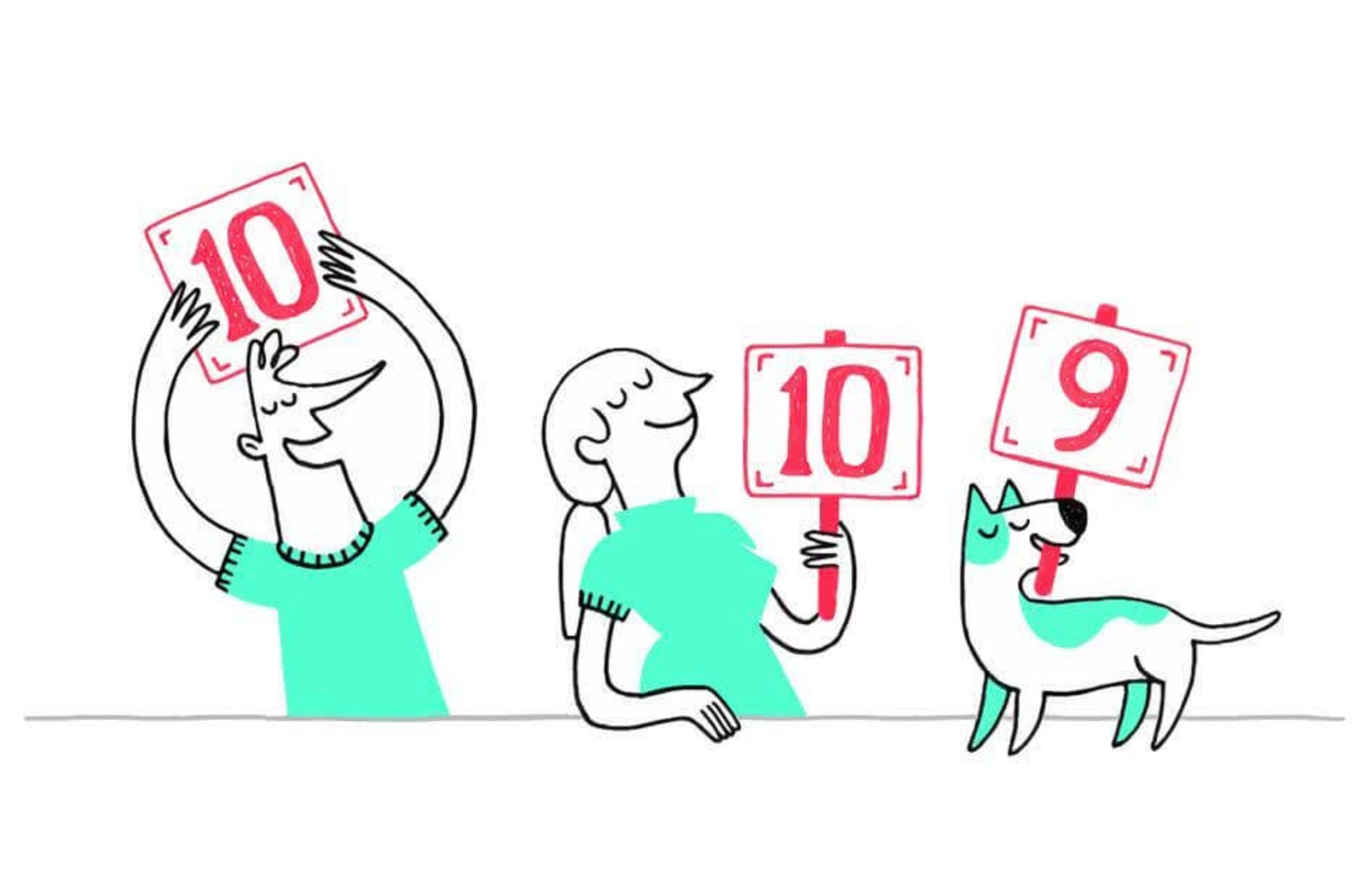You’ve run an Net Promoter Score® survey to gauge the satisfaction and loyalty of your users. But what do the results mean?
Here are 5 questions to ask yourself when conducting an NPS analysis.
1. What is the breakdown of respondents for each point on the NPS scale?
Grouping your scorers into detractors, passives, and promoters is necessary to calculate your NPS and come up with a final score. However, you don’t want to ignore the fact that there’s a big difference between, say, a 1 and a 6.
To visualize the distribution of scores across the NPS spectrum, create a simple bar chart that shows the % breakdown of how many respondents gave each score:

Then observe:
Do your detractors cluster toward the bottom or top of the 0-6 scale, or are they evenly distributed?
Do you have a large chunk of passive customers who could be turned into promoters for a quick win?
Are your customers split between loving and hating you (e.g., very few passives)?
Looking for answers and patterns can help you decide which scenario to tackle first and inform your growth strategy as a result.
2. How does the customer experience differ along each point on the scale?
What separates a 4 from a 5 on the NPS scale? How about a 7 from an 8? Every NPS survey should include open-ended follow-up questions where you ask your customers why they gave you the scores they did, so you can later search their answers for patterns.
![[Visual] NPS](http://images.ctfassets.net/gwbpo1m641r7/obOk6WuHi3X1yOc71De73/232ec64f77517471146b0281855cc9b6/Screenshot_2024-11-04_at_21.56.17.png?w=3840&q=100&fit=fill&fm=avif)
For example, an ecommerce company might find that 20% of its 0, 1, and 2 scores come from customers who are frustrated with a very specific element of the experience (e.g., lack of detail on a product page). Fixing this problem could turn as much as 20% of the detractors into promoters—or passives at the very least.
Open-ended NPS data analysis takes a little more effort than tallying the results of closed-ended surveys, but we wrote a quick tutorial that makes analyzing the data easier.
3. Which market segments are represented in each point on the scale?
Breaking down NPS by market segment, from demographics to psychographics, can help you get to know your customers better.
For example, if you run a business-to-consumer (B2C) software company, you might find that senior customers (aged 65+) are over-represented among detractors. Of course, you don’t want to make assumptions about why this is the case without evaluating their comments, but this data point gives you a headstart in your quest for deeper NPS analysis.
4. How does customer tenure correlate to NPS?

Do your long-term customers give you a higher NPS score? Hopefully, this is true across the board—that the longer someone remains your customer, the more likely they are to recommend you to a friend/colleague/relevant person.
Unfortunately, it doesn’t always work this way, and if you notice that tenure has no effect at all on NPS (or that it has a negative correlation), it’s time to dig into the qualitative data and figure out why. What you discover may help you reduce customer churn and improve retention.
5. How does revenue correlate to NPS ratings?
According to Fred Reichheld, the creator of NPS, companies with a highly sophisticated understanding of NPS economics can identify the exact economic return that comes from moving a customer along any point in the 0–10 scale.
Of course, not everyone has the time or resources to come up with a formula like that for their business, but you can still benefit from observing the correlation between per capita revenue and NPS score. This should allow you to focus your improvement efforts to maximize return on investment (ROI); if the trend is generally a positive one (which it should be), it will demonstrate the value of improving customer loyalty and engagement.
Wrapping up: the importance of analyzing NPS data
Whether you use them together or in isolation, the previous questions might well lead to additional questions and opportunities for investigation. Use them to go beyond NPS as just a number: quantitative segmentation and qualitative feedback from your customers will help you uncover obstacles to loyalty and engagement, and this insight might ultimately help you turn detractors into promoters.
Net Promoter, Net Promoter System, Net Promoter Score, NPS and the NPS-related emoticons are registered trademarks of Bain & Company, Inc., Fred Reichheld and Satmetrix Systems, Inc.
